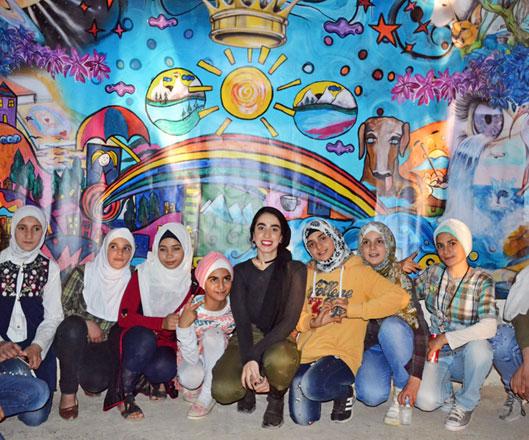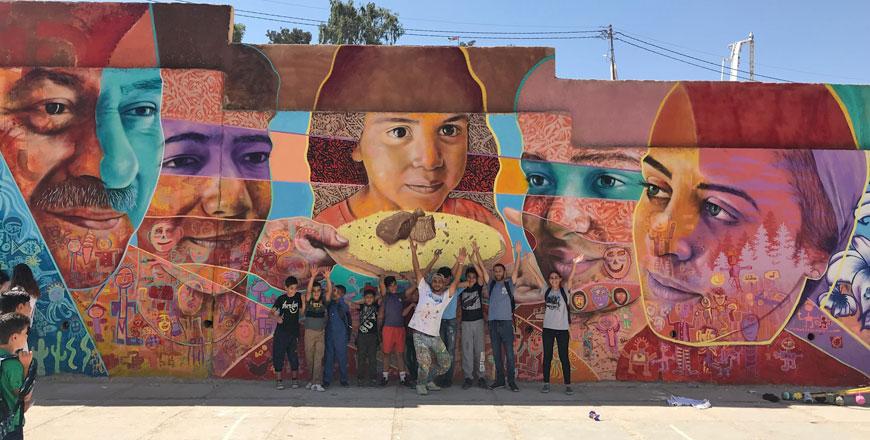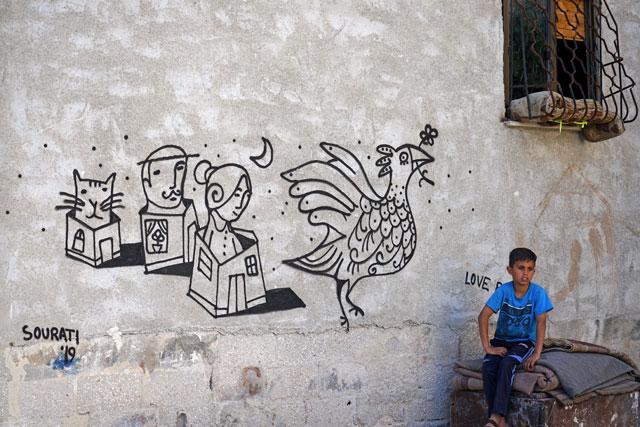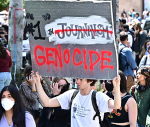You are here
NGO deploys modern tech to bring world children closer
By Yasmeen Kanaan - Jun 04,2019 - Last updated at Jun 04,2019

In this undated photo, refugee children who drew the combined mural can be seen posing for a group picture (Photo by Yasmeen Kanaan)
AL AZRAQ — A new augmented reality app has been released to create an interactive cultural exchange between different countries around the world through art and poetry.
Launched by Voices of the Children, a non-profit organisation, the application, also called Voices of the Children, is an output of months-long poetry and art programme titled Rachel’s HeART, in collaboration with the Syria Fund and Philanthropic Adventures (Switzerland).
As a celebration of its release, a group Iftar with the participating children and their families was held at a school in Al Azraq Camp, as an exhibition and a demonstration of the application took place right after breaking the fast.
The project leading to the application included a three-part workshop, which paved the way for refugee children at the Azraq camp school to connect and exchange interpretations of the concept of “home” with children in Geneva, Switzerland. Children were encouraged to write poems, which then were translated and swapped with the partner group. The poems would then be an inspiration to create a visual translation of “home”.
“Their concept of home is the same, even though the two cultures on the surface are different. They are learning about commonalities, and the goal is to destroy the concept of the other; there is a collective we,” Aron Wagner, the founder of Voices of the Children, said in an interview with The Jordan Times on the sidelines of the event.
The story began with a privileged child in Geneva named Orsan, who decided to create a community project instead of receiving gifts in return for a communal celebration. He decided to create a project that revolves around such a concept as he is always travelling and missing home.
“The first part of the workshop, which was writing the poems, was quite difficult, because how often do we think about that? When we do, it reflects inwards on who we are.”
The visuals created by both children in Geneva and Azraq camp were later collected and given to two professional artists: Dutch Bihary and Ahmad Estaitia, who combined them to produce two separate murals for each group. As a final result, both pieces were combined into one digital mural by artist Kevin Hartman and brought to life using the augmented reality app.
“Viewing the mural through the app creates an interactive learning experience wherein videos from the project and students reading their poems that inspired elements in the mural can be seen,” the press release said.
“The whole concept behind Voices of the Children is to use art as a form of connectivity. It was not about pairing children from privileged versus non-privileged countries, being displaced versus being stable, green versus desert...”
Asil Jabr, the organiser of the programme in Jordan, said that that her motivation to manage this project is “seeing the kids get the exposure they would never get otherwise, given their lives inside the camp”.
“I want them to have and develop their own connections outside this isolated desert they live in. I also want them to develop creative hobbies in their free time. Most importantly, I want them to know that they can reach this world; if they cannot travel, their poems still can.”
Wagner hopes to have this project exhibited in local galleries and museums.
“The mural is a digital file, it could be printed and exhibited everywhere; classrooms, museums..., etc. The visuals in the application respond to the children’s poems allowing its users to hear the kids reciting their poems, and that is exposure.”
Wagner also looks forward to growing the organisation’s capacity and getting into more countries, as his current vision is to pair Syrian refugee youths with youth worldwide through collaborative arts projects to promote social and global awareness.
“Since we don’t learn about the Middle East in our school curriculum, growing empathy is what I am looking for; the connection not the art work itself, and the process of putting yourself in someone else’s shoes.”
Related Articles
AMMAN — The schoolchildren of Zarqa last week took part in a radical artistic makeover, whereby they skillfully painted the walls of their l
AMMAN — Amman’s cityscape was saturated with colour and hope as Italian street artist Millo kick-started the Baladk Street and Urban Art Fes
AMMAN — Street artist Suhaib Attar paints over his own mural as a new work is being born for the public during the Baladk street art festiva



















